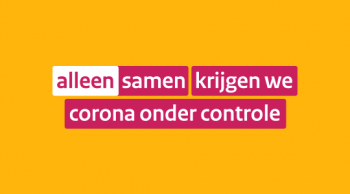Corona in Understandable (Dutch) Language Posted by Karoly Molina on May 20, 2020 in Culture, Dutch Language, News
Since the corona crisis began in the Netherlands, the Dutch government has made available so much information, however, this isn’t always done in simple language. This creates a problem for the 2.5 million people in the Netherlands who have low reading, writing and counting skills. Fortunately, the Stichting Lezen en Schrijven is doing something to help!
Stichting Lezen en Schrijven
The website of the Dutch organisation for reading and writing, Stichting Lezen en Schrijven, calculates that 2.5 million people who are 16 years or older have moeite or problems reading, writing and counting. This is referred to as analfabetisme or illiteracy. This group, which is about 18% of the population, also tends to have low digital vaardigheden or skills. More than half of this group are native Dutch. Below is the full statement from the website:
In Nederland hebben 2,5 miljoen mensen van 16 jaar en ouder moeite met lezen, schrijven en/of rekenen. Vaak hebben zij ook moeite met digitale vaardigheden. Dat staat gelijk aan 18%, dus ongeveer 1 op de 6 mensen in Nederland. Daarvan hebben bijna 1,8 miljoen mensen tussen de 16 en 65 jaar moeite met taal en/of rekenen. Meer dan de helft van deze groep is autochtoon.
This literacy problem isn’t only difficult for those who live it. This costs the Dutch economy, described as kenniseconomie or knowledge economy, €1.13 billion per year or $1.2 billion US dollars. This ‘cost’ comes from lower income tax collected, higher health care costs, and overall more poverty (which results in more need for government subsidies). In addition, there is the added intangible effects or immateriële effecten such as lower participation in society, mistrust in other people, and less participation in volunteer work. (Source: Stichting Lezen en Schrijven)
The Stichting Lezen en Schrijven works to help people with literacy problems. They work together with several partners, they provide support for municipalities, teachers, volunteers and organisations with training, research material, advice and campaigns.
Corona Crisis
The Dutch government provides a lot of information about the corona virus, the safety measures including the “intelligent lockdown,” and advice on how best to protect yourself. This information, however, is not always presented in a language that is vriendelijk or friendly to the 18% of the population with literacy problems. Take for instance the press conference given on April 21st, 2020. Premier Rutte began his speech with the following sentence:
“Zoals eerder aangekondigd, heeft de ministeriële Commissie Crisisbeheersing zich vandaag gebogen over de vraag of een versoepeling mogelijk is van de intelligente lockdown van ons land.”
That is a mouthful of a sentence in regards to grammar, word choice and sentence structure! The press conferences also includes other words that could be difficult such as Outbreak Management Team, intelligente lockdown, viroloog, and pandemie (Source: RTL).
In order to make information more accessible and understandable for the 2.5 million people with reading problems, the Stitching Lezen en Schrijven created the website Corona in Begrijpelijke Taal where they ‘translate’ the information and present it in informative videos, simple descriptions and the possibility of ‘listening’ rather than reading. The information given at the different press conferences is also available. There are several posters available for download that can be useful at grocery stores, municipal offices, doctors and pharmacies. One of the resources I found to be the most useful is the vocabulary list of terms related to corona. This list doesn’t only serve an informative purpose, but it is also a resource to improve literacy (and a great resource for those of us learning the language).
Below is the ‘translation’ of the April 21st press conference.
It is imperative that everyone can understand the safety measures to combat COVID-19. Like the Dutch government commercials remind us, alleen samen krijgen wij corona onder controle!
Are there corona-related resources for disadvantaged groups in your country?

Build vocabulary, practice pronunciation, and more with Transparent Language Online. Available anytime, anywhere, on any device.






Comments:
Rachel:
Thank you for these interesting and informative blog posts. I love how you are sprinkling in Dutch words. There is enough context to learn them without overwhelm.